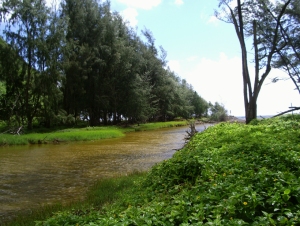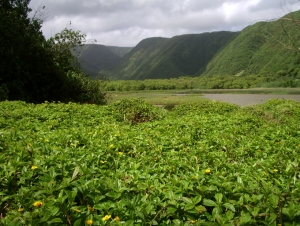Whether you visit the Big Island for a few days, a couple weeks or a few months, you want to make the most of your time in Paradise. With such a wide variety of natural and commercial attractions, it is natural for the visitor to get a little overwhelmed in the “Option Overload” and not be able to make a balanced and informed decision on what they want to do and how best to spend their time.
Even choosing the beach you want to spend time on...which beach? How do you find the right beach for your particular needs? Are you going just to relax and sunbathe? Or is the trip to snorkel, boogie board or to explore? Do you want a beach that's alive with fun people or one hidden, secluded and empty? Do you want a beach near your resort or one that's at the end of a day of delicious wandering?
Tour Guide Hawaii is excited and proud to announce the release of their new GPS/WiFi enabled App for iPhone and iPod that helps you navigate your trip to Hawaii with hours of informative, location-aware video and information. Although our video guide will lead you to dozens of unusual, untamed and unspoiled spots, let's look at one, hidden but gorgeous, beach hike you would otherwise not find if you did not have Tour Guide Hawaii's new App.
Hiking into Pololu Valley
Violent, lush, wild; the north end of Hawai’i Island is as varied and exciting as it is unexpected. At the end of the highway are the Pololu Valley Overlook and the trail leading down to Pololu Beach. This is one of the most untamed, beautiful spots in the tropical Pacific and should not be missed. The trail down to the beach drops 400 feet in 20 minutes of hiking—be warned, the hike up is difficult for those not in good physical shape and the hike down should not be attempted if you have doubts about being able to hike back up.
The valley itself is private land, so stay close to the beach. The best place to cross the stream is usually about 80-120 feet inland and during either slack or high tide; spend a few minutes to find the stone ford for an easier crossing.

- The Beach at Pololu Valley. The Channel Here Between Hawaii and Maui Has The Third Highest Discharge of Water in the World, Behind the Bay of Fundy and the Straights of Magellan. Because of the Unbelievable Ocean Currents This Generates, and Strong Rip Tides, We Do Not Recommend Swimming or Surfing at Pololu: Photo by Donnie MacGowan
The beach is not usually swimmable due to the violent surf and ocean currents, but makes a wonderful place to picnic and contemplate the awesome power and violence of nature.
For the adventurous, the hike down to Pololu Valley may not be enough—for them may we suggest further hiking in this lightly-traveled area. Pololu is the starting point for over 40 miles of interconnecting tails, as well as the Kohala Ditch. Trails in this area are steep, unmaintained, crumbling and frequently quite slick, so caution is advised, particularly on hillslopes and in the rain, when trails may turn into streambeds and hillsides into waterfalls.
The hike over intervening ridges east into Honokane Nui Valley and Honokane Iki Valley provides spectacular views of this untamed, but private land. Climbing 600 muddy feet over the ridge, the trail then drops breathtakingly down to the valley floor. Before the stream, the trail divides at a bamboo grove—if you are proceeding on to Honokane Iki, follow the fork to the right through the bamboo, otherwise go left on to the wonderful, lonely, private, boulder beach.
Going on farther east into Honokane Iki Valley from Honokane Nui is very rewarding and easier than the hop from Pololu to Honokane Nui, climbing just 400 muddy feet over the ridge. There are numerous ruins from previous eras of population, ancient to recent, to explore in both these valleys. It is possible to wander the intersecting, disappearing, maddening trails all the way into Waipi’o Valley, 14 canyons and about 15 bushwhacking, stream-fording, slope-slipping, rain-slogging, breathtaking, aggravating, wonderful miles away. This is definitely a trip for more than a single day and permission must be gained to cross the private land.
Under no circumstances should the hiker be seduced by the thought of an easy return back into Pololu Valley by skirting the headlands along the ocean. This is longer and much more difficult than it appears and has proven fatal to the unwary.
Bring good insect repellent and wear hiking boots, with tabis in your pack for stream fording and beach walking. Stream water in the valleys is infected with leptospirosis bacteria, so bring plenty of water (at least two liters per person) in your pack. A camera is a must and due to frequent squalls off the ocean, rain gear is highly recommended.
To see the new iPhone/iPod Touch App, please visit http://www.tourguidehawaii.com/iphone.html. The best of Tour Guide Hawaii's free content about traveling to, and exploring, the Big island, can be found here. For more information on traveling to Hawaii in general and on touring the Big Island in particular, please also visit www.tourguidehawaii.com and www.lovingthebigisland.wordpress.com.
Copyright 2009 by Donald B. MacGowan. All rights reserved.

















No comments:
Post a Comment